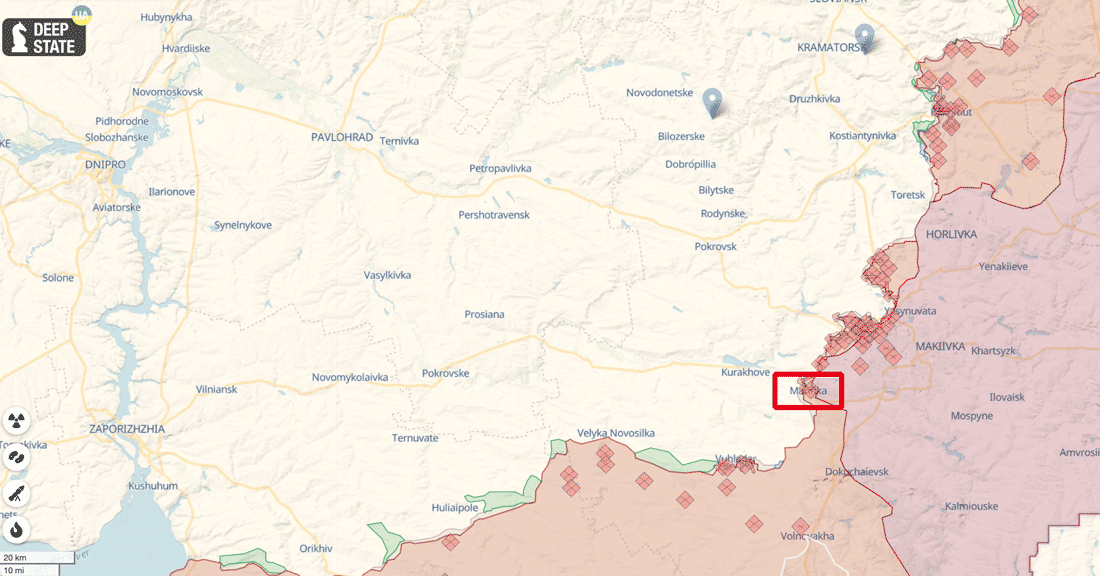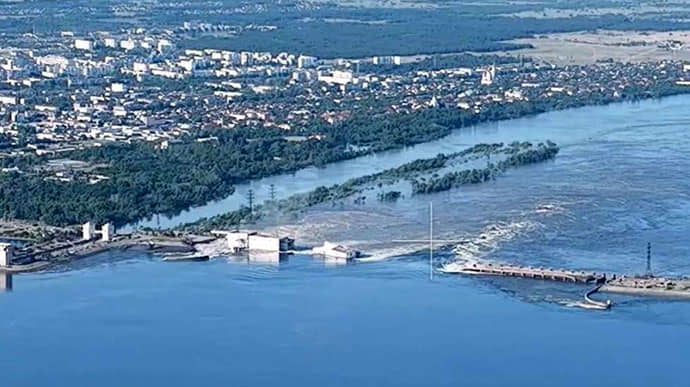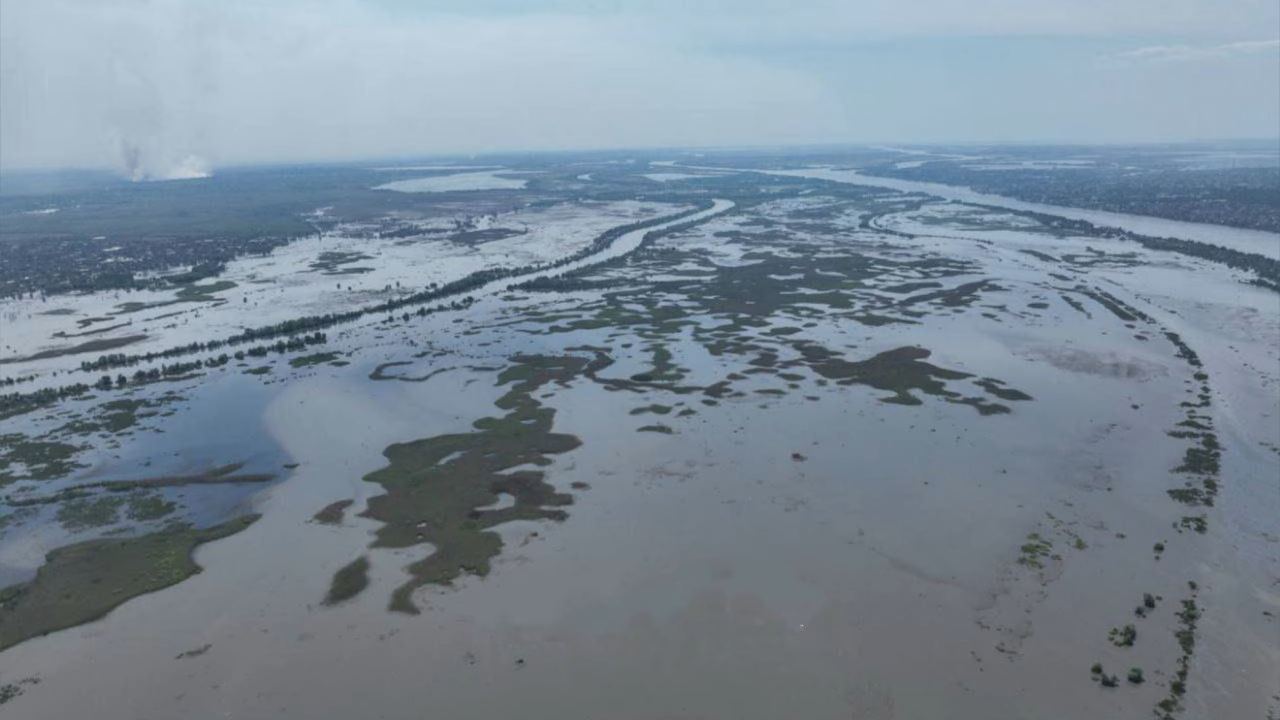Investigative journalists from RFE/RL's Skhemy project and Slidstvo.info have identified the Russian soldiers and their commanders who controlled the Kakhovka Hydroelectric plant, blown up on 6 June. As well, they publish intercepts pointing to the Russians' involvement in blowing up the dam.
On the dawn of June 6, news broke of the partial destruction of the dam of the Kakhovka reservoir and hydroelectric station, leading to widespread flooding in southern Ukraine. The Ukrainian government had previously warned of the occupiers' plans to detonate the Kakhovka Hydropower Plant (HPP) long before the catastrophe occurred.
Western media initially questioned whether an explosion had taken place, but subsequent evidence emerged to support this claim, including seismic signals detected by Norwegian experts and images from American reconnaissance satellites. Now, Western leaders are unanimous in their assertion that Russia, whether intentionally or through negligence, is responsible for the dam's destruction and the flooding of the Kherson Oblast. After all, it was the Russian military that had seized and controlled the dam and the Kakhovka HES since the beginning of the full-scale invasion.
Located half a kilometer from the city of Nova Kakhovka in the Kherson Oblast, the hydroelectric plant was fully controlled by Russian occupation forces since the start of Russia's full-blown war in February 2022.
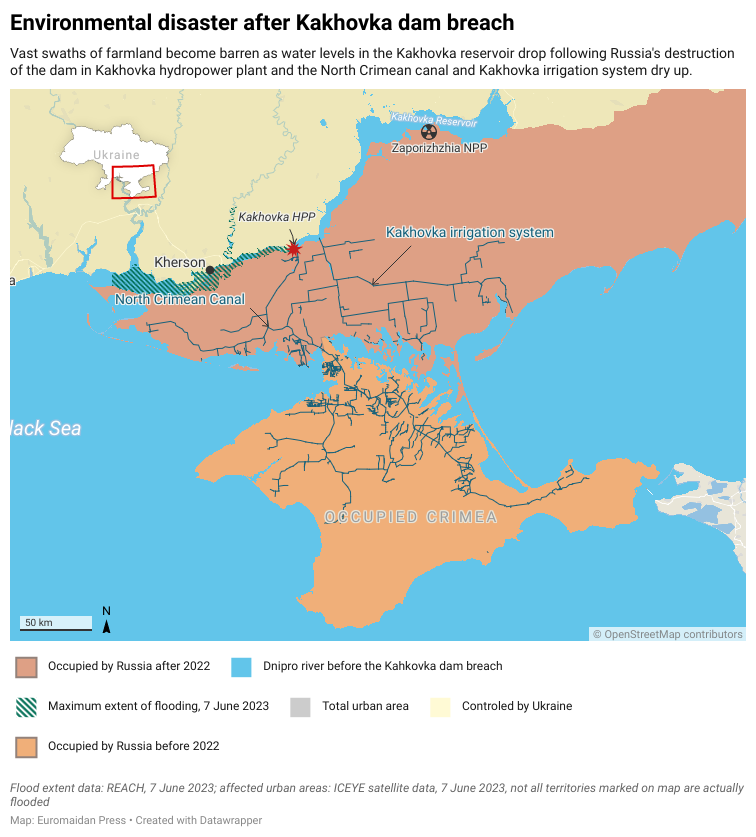
According to reports from the Main Intelligence Directorate and the Office of the President, positions at the HPP and nearby were established by soldiers of the 205th separate motorized rifle brigade of the Russian Ground Forces. This fact was confirmed by Russian pro-war bloggers: interviews with soldiers of the 205th brigade boasting about their weapons and "successfully arranged" firing positions near the HES, can be found on the Russian video hosting RuTube.
The investigative journalists from Skhemy and Slidstvo.info identified several Russian soldiers of this brigade who directly controlled the Kakhovka HPP. In particular, they identified 35-year-old Arsen Pitskhelauri with the call sign "Georgian," who, judging by photos in the Russian social network VKontakte, took an active part in the occupation of the Kherson Oblast.
Journalists also managed to identify Ruslan Magomedov
, a sergeant of the engineering and sapper battalion of the 205th brigade, who was awarded the Russian Order of Courage in December 2022.

The new commander of the occupiers at the HES is Roman Titov.
Ukrainian officials and the media have said that the Kakhovka HES being blown up by soldiers of the 205th separate motorized rifle brigade is currently the main versionю
Journalists received an updated list of soldiers of the 205th brigade from sources in one of Ukraine's special purpose state agencies. This is almost four hundred people who serve in motorized rifle battalions, a communications company, self-propelled artillery divisions, a rocket artillery division, an anti-tank artillery division, an anti-aircraft missile division, a reconnaissance battalion, an engineering and sapper battalion, and other units of the 205th brigade.
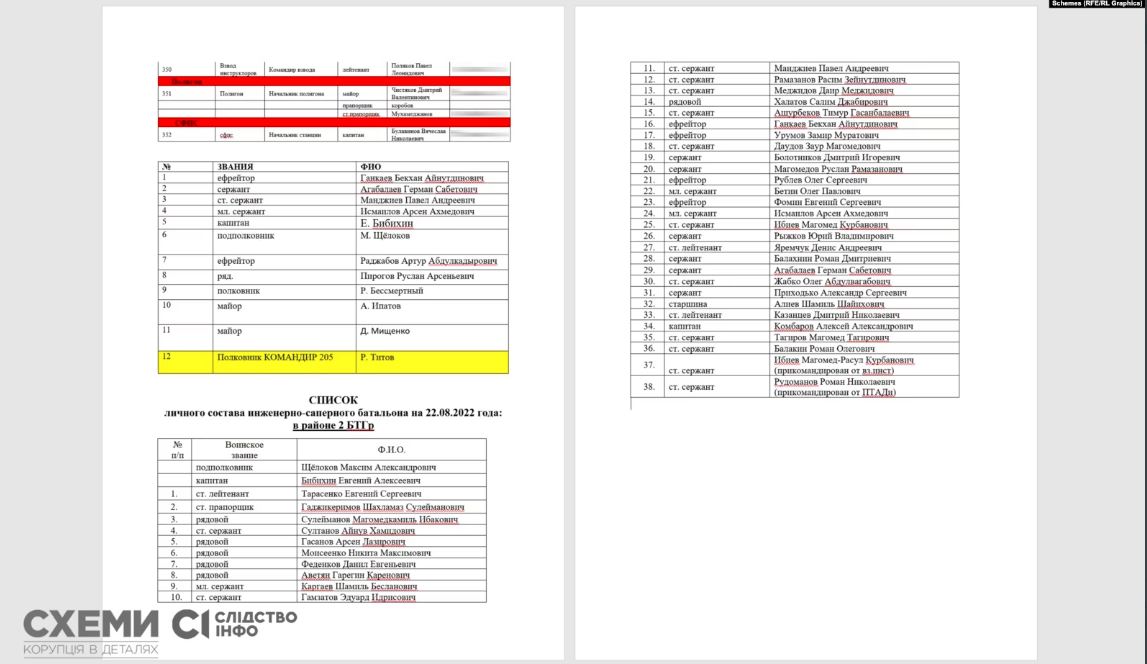
According to the received document, the commander of the 205th brigade is not Eduard Shandura, but Colonel Roman Titov.

Additional confirmation of the change in command was found by journalists on the page of school №16 of the village of Kuzminskoye of the Stavropol Territory in the Russian social network VKontakte. In December 2022, they published a photo of a letter from Colonel Roman Titov, in which he thanked the school for the parcels sent to the soldiers of the 205th brigade.
Additionally, the journalists publish an intercept of a conversation between two Russian soldiers that they received from a source in the Ukrainian military. The conversation reportedly takes place between 2.20 and 2.34 am on June 6, the time when Ukrainian residents of Nova Kakhovka heard profound explosions attributed to the dam's destruction:
02:20 - What's the situation? That's one; second, standby, standby, all on command. Over.
02:20 - It already started here.
02:21 - Roger, roger; move out to the point, to the point, take everything.
02:21 - We can't take anything anymore.
02:30 - Emergency. Evacuation point here is finished, full of water.
02:34 - Move out to the place where you were picked up and brought back.
02:34 - Can't get out, everything is flooded.
The command to "move to the point and take everything" was given, judging by the conversation, after the dam was destroyed. And it seems that not everyone was able to "move out" because everything was "full of water." Thus, the intercepts indicate that there was a "command" from the Russian military leadership, that "evacuation points" were planned, and that an "emergency" occurred. This evidence may indicate the Russians' intention to blow up the Kakhovka HPP, the journalists write.
As well, the journalists found an engineer at the Kakhovka HPP who was forced to continue working at the power plant during the occupation until September 2022. The man's name was not disclosed for safety reasons.
According to the worker, since the beginning of the occupation, sappers from the Russian army have been living at the hydroelectric power plant, and they had access to all the premises of the building: "The sappers lived in a bomb shelter right at the HPP. We had a bomb shelter under the control panel, and a team of sappers with dogs lived there, because there were locker rooms, showers, refrigerators, and everything you need. We can say that they were an 'elite unit' with such conditions."
The HPP engineer said that during his stay at the station, workers were not allowed to enter a number of rooms. Among them were the plant's underground premises.
"The HPP's pitches are located at minus 7 meters. I do not exclude that at that time, there was already something secret there. I didn't personally see how the explosives were brought there, but judging by the nature of the damage to Kakhovka HPP that we all saw, this is one of the likely places where the explosion could have occurred," says the HPP employee.
The journalists also talked to Ukrainian military sapper Mykola Shchehelskyi:
"All the mechanics of blowing up the hydroelectric power plant was done according to the textbook, on where to put the explosives. It was all done from the inside. The dam was definitely prepared to be blown up. The explosion did not go outside, because such operations are done by helping the water do all the work. A few cracks in the dam - and it will do everything by itself."
The 205th Brigade includes, among others, an engineer battalion (38 soldiers).
The Kakhovka HPP's destruction and the Kherson Oblast's subsequent flooding have led to a humanitarian catastrophe. The flooding has displaced thousands of people, destroyed homes and infrastructure, and caused significant economic damage. The Ukrainian government and international organizations are now working to provide aid to the affected areas and to hold those responsible accountable.
Related:
- Evidence suggests Russia destroyed Kakhovka dam from within – NYT
- No, the Kakhovka dam could not have collapsed on its own
- Earwitnesses recall hearing explosions on night when Nova Kakhovka dam collapsed
- Seismic signals indicate Kakhovka dam explosion – NORSAR
- Russian sabotage group blew up Kakhovka dam; it didn’t go as planned, SBU intercept alleges
- Kakhovka Dam was built to withstand nuclear strike, couldn’t be destroyed from outside – Ukrhydroproject engineering company
- Kakhovka dam breach: Hundreds of Ukrainians drown as Russia prevents evacuation, seals off flooded towns


